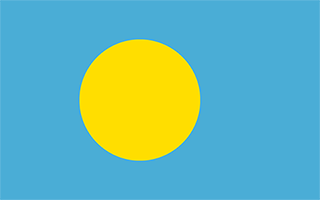Facts and Data
Webpages:
Official Unesco Page
Protectedplanet.net
Basis Data:
Unesco World heritage since: 2012
Size of heritage: 100,200 ha
- Buffer zone: 164,000 ha
Coordinates:
Longitude: 134,353°
Latitude: 7,247°
Summary
Rock Islands Southern Lagoon covers 100,200 ha and includes 445 uninhabited limestone islands of volcanic origin. Many of them display unique mushroom-like shapes in turquoise lagoons surrounded by coral reefs. The aesthetic beauty of the site is heightened by a complex reef system featuring over 385 coral species and different types of habitat. They sustain a large diversity of plants, birds and marine life including dugong and at least thirteen shark species. The site harbours the highest concentration of marine lakes anywhere, isolated bodies of seawater separated from the ocean by land barriers. They are among the islands’ distinctive features and sustain high endemism of populations which continue to yield new species discoveries. The remains of stonework villages, as well as burial sites and rock art, bear testimony to the organization of small island communities over some three millennia. The abandonment of the villages in the 17th and 18th centuries illustrates the consequences of climate change, population growth and subsistence behaviour on a society living in a marginal marine environment.
Location on Map
Show bigger map on Openstreetmap
Rock Islands Southern Lagoon: A Natural Wonder in Palau
The Rock Islands Southern Lagoon, located in the Republic of Palau, is a UNESCO World Heritage site renowned for its exceptional natural beauty and ecological significance. Situated at coordinates N7 14 48.93 E134 21 9, this stunning lagoon encompasses a vast area of approximately 100,200 hectares and is home to over 445 uninhabited limestone islands.
History
The Rock Islands Southern Lagoon has a rich history that dates back thousands of years. The islands have been inhabited by Palauan people since ancient times, with evidence of human presence found in archaeological sites throughout the area. These islands hold great cultural and spiritual significance for the Palauan people, who consider them sacred and have passed down stories and legends about their creation from generation to generation.
During World War II, the Rock Islands Southern Lagoon witnessed significant military activity. The islands served as a strategic base for the Japanese forces, who constructed numerous fortifications and bunkers. The remnants of these wartime structures can still be seen today, adding a historical layer to the natural beauty of the area.
Current State
The Rock Islands Southern Lagoon is renowned for its breathtaking landscapes, crystal-clear turquoise waters, and abundant marine life. The limestone islands, covered in lush vegetation, rise dramatically from the sea, creating a unique and picturesque scenery that attracts visitors from around the world.
The lagoon is home to a diverse range of marine species, including over 385 species of coral, 13 species of sharks, and over 700 species of fish. It is also a vital nesting ground for endangered sea turtles, such as the green turtle and the hawksbill turtle. The pristine waters of the lagoon provide a sanctuary for these species, making it a crucial conservation area.
Palauan authorities have implemented strict regulations to protect the Rock Islands Southern Lagoon and its fragile ecosystem. These measures include limiting the number of visitors, prohibiting fishing in certain areas, and enforcing strict waste management practices. These conservation efforts aim to preserve the natural integrity of the lagoon and ensure its sustainability for future generations.
Visitors to the Rock Islands Southern Lagoon can explore its wonders through various activities such as kayaking, snorkeling, and diving. The lagoon offers an unparalleled underwater experience, with vibrant coral reefs, underwater caves, and an abundance of marine life to discover.
In recognition of its outstanding universal value, the Rock Islands Southern Lagoon was inscribed as a UNESCO World Heritage site in 2012. This prestigious designation highlights the importance of preserving this natural wonder and raises awareness about the need for global conservation efforts.
The Rock Islands Southern Lagoon in Palau stands as a testament to the beauty and diversity of our planet's natural wonders. Its rich history, stunning landscapes, and thriving marine ecosystem make it a must-visit destination for nature enthusiasts and a symbol of the importance of protecting our fragile ecosystems.
